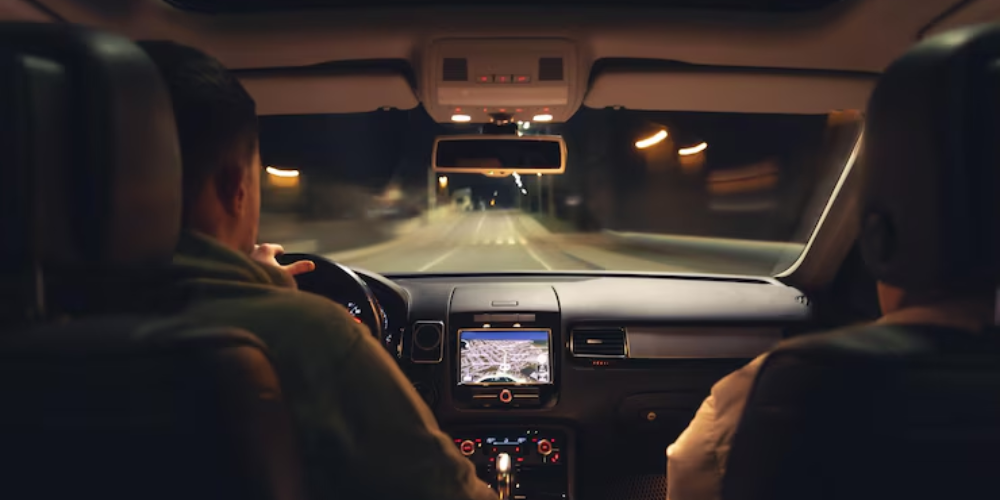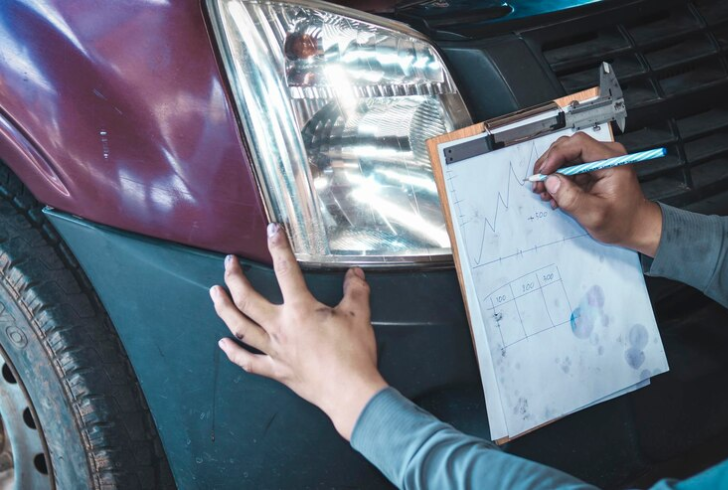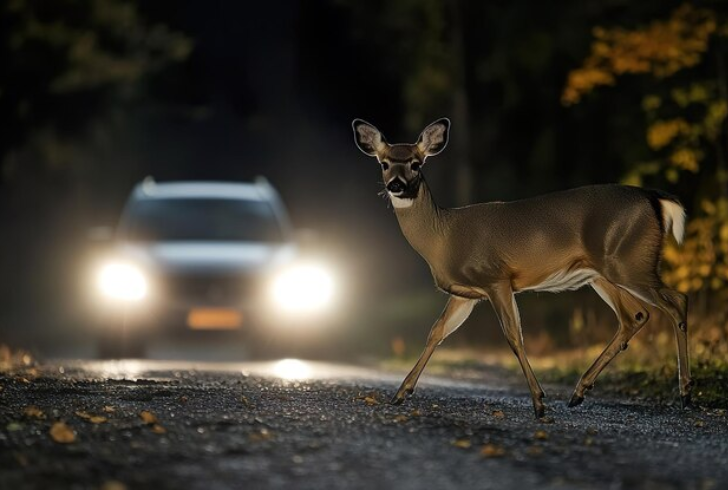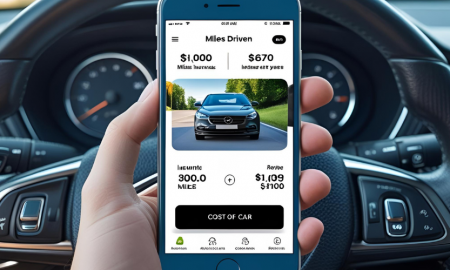
9 Tips to Make Night Driving Safer and Less Frightening

Once the sun dips below the horizon, driving becomes more than just a commute—it becomes a challenge. Limited visibility, harsh glares, and hidden road hazards quickly raise the stakes after dark. While many drivers assume they’re simply used to night driving, the truth is that visibility drops drastically, especially for those with even slight vision impairments.
Fortunately, there are several expert-backed adjustments that can greatly reduce the risks of driving in the dark. Whether you’re navigating rural roads or heading home through city streets, these nine strategies can help keep your nighttime drives safer and less stressful.
1. Keep the Windshield Spotless

Freepik | dusanpetkovicon| Boost night visibility by regularly cleaning your windshield to eliminate glare from dust and smudges.
One of the easiest ways to improve visibility at night is by cleaning the windshield regularly. Dust, smudges, or watermarks can scatter light and increase glare from streetlights and headlights.
This not only distracts drivers but also reduces the ability to see clearly. Aim to clean your windshield weekly, especially if you drive in dusty regions or after a rainstorm.
2. Don’t Ignore Your Headlights
Headlights collect dirt, bugs, and grime quickly, especially if your commute includes long highway drives or country roads. Dull or dirty headlights reduce how far ahead you can see, which can turn even familiar roads into dangerous paths.
Take time to wipe them down and check that both lights are working before any nighttime trip.
3. Use High Beams When It’s Safe
High beams are very helpful when traveling on vast, deserted roads or in rural, dark locations. They provide more range and depth to your vision. However, avoid using them in heavy traffic, during rain or fog, or when approaching hills and curves where they can blind other drivers.
4. Avoid Looking at Oncoming Headlights
Although it may feel natural to look toward bright lights, resist the urge. Bright headlights can temporarily affect your night vision and cause afterimages that linger, which makes it harder to see once the car passes.
Instead, keep your eyes on the road ahead and move them slightly to the right edge of your lane.
5. Check Your Headlight Alignment

Freepik | EyeEm | Check your headlight alignment regularly for safety.
Even if your headlights are clean and functional, they might not be aimed correctly. Over time, bumps in the road or vehicle wear can misalign headlights. Poor alignment decreases road visibility and increases glare for other drivers. During regular vehicle inspections, ask your mechanic to check and adjust the alignment.
6. Dim Interior Lights
The lighting inside the car may make it difficult for you to see what’s going on outside. Bright dashboard displays, cabin lights, or screens increase internal reflections and reduce night vision. Keep interior lights low or off altogether to help your eyes adjust better to the dark surroundings.
7. Keep Your Glasses Clean and Fitted Properly
Smudged lenses scatter light in the same way a dirty windshield does. Keep eyeglasses crystal-clear by using a microfiber cloth or gentle soap and water—never just the corner of a shirt. Make sure your prescription is up to date, and consider anti-reflective lenses for reduced glare.
If you’re exploring night driving glasses, consult your eye doctor first. While some claim to reduce glare, they might not work for everyone.
8. Stay Well-Rested and Alert
Fatigue doesn’t just slow reaction time; it can also blur your vision and dull focus. Shifts in daylight from seasonal time changes can disrupt your internal body clock, making drivers feel more tired during evening hours.
To combat this, avoid caffeine too late in the day and maintain a regular sleep routine.
9. Stay Aware of Your Environment

Freepik | lucegrafiar| At night, stay extra vigilant for animals, pedestrians, and debris on the road.
Paying close attention to your surroundings becomes even more crucial at night. Watch for animals near wooded roads, be alert for pedestrians in poorly lit areas, and expect unexpected hazards like fallen branches or tire debris. Slow down slightly on roads you don’t know well and increase your following distance to allow more reaction time.
Night driving doesn’t have to be a nerve-wracking experience. By following these 9 practical tips you can boost both your safety and confidence behind the wheel after dark.
Remember, preparation and awareness go a long way in reducing the risks associated with nighttime driving. With a few mindful adjustments, you’ll be better equipped to handle the road—no matter what time it is.
More inDriving
-
`
Do Car Insurance Companies Offer Pay-As-You-Go Plans?
Car insurance premiums often feel unfair to people who rarely drive. Yet, most traditional auto policies still charge a fixed monthly...
July 17, 2025 -
`
Why the Koenigsegg Sadair Spear Is the Ultimate Hypercar Beast
Koenigsegg has revealed a new beast—the Sadair’s Spear. Tuning its focus on raw performance and brutal speed, this hypercar marks the...
July 11, 2025 -
`
Which States Have the Safest—and Riskiest—Drivers in America?
Driving safety isn’t just about skill. It’s also about location. A recent nationwide report shines a spotlight on where drivers are...
July 4, 2025 -
`
How to Save on Tesla Car Insurance Without Compromising Coverage
Owning a Tesla often brings savings on fuel and a futuristic driving experience, but the conversation changes quickly when it comes...
June 26, 2025 -
`
10 Weird Cars That Turned Heads and Won Hearts
Some cars turn heads with speed, others with luxury—but a rare few grab your attention simply by being delightfully strange. From...
June 20, 2025 -
`
Next-Gen Jeep Cherokee Expected to Arrive by Late 2025
After a break of two years, Jeep is prepared to relaunch the Cherokee brand. The automaker confirmed the return with fresh...
June 12, 2025 -
`
The Impact of AI on Middle Management and Leadership Dynamics
Artificial intelligence is reshaping modern management practices. While intended to streamline tasks like approving time off or managing internal applications, its...
May 31, 2025 -
`
Car Insurance Rates Were Set to Fall—Then Tariffs Changed the Game
For many drivers, there was reason to hope for some relief on car insurance costs this year. After a strong performance...
May 25, 2025 -
`
Tesla Robotaxi Service to Launch Soon – How Will It Affect Tesla Stock?
Tesla’s stock continues to go up as the business gets ready to launch its long-awaited robotaxi service. Scheduled for June in...
May 16, 2025















You must be logged in to post a comment Login